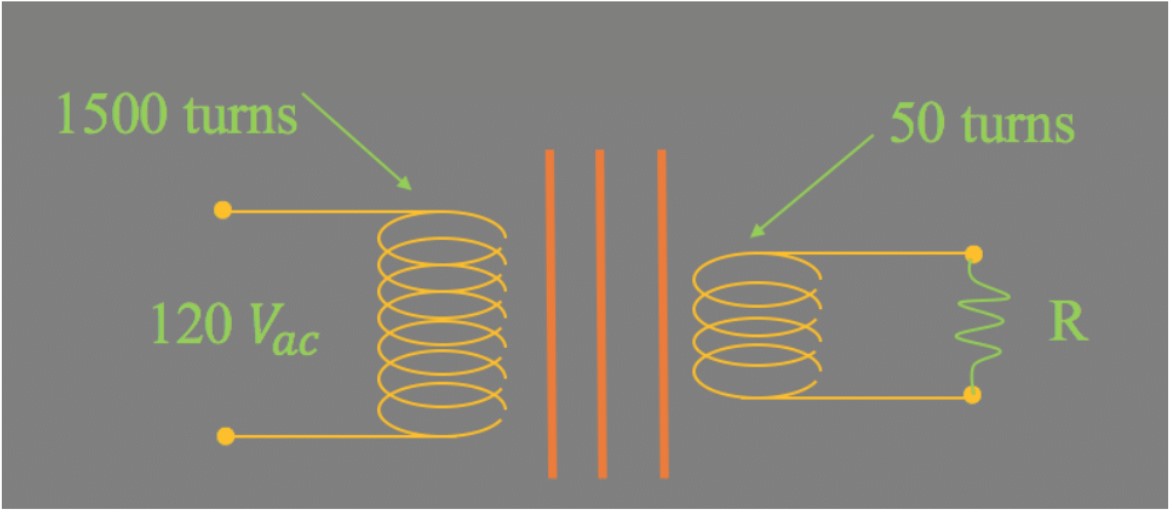In this lesson, we will learn:
- What does a transformer do and what does it consist of?
- Types of transformers
- Transformers equations
- How to reduce power loss in transmission lines?
Notes:
- A device for increasing or decreasing an ac voltage.
- Example of transformers:
- There is a transformer in TV sets to provide high voltage for the picture tube.
- Utility poles require transformers to reduce the high voltage from the electric company to a useable voltage in houses.
- Transformers operate only with ac voltages; dc voltage does not produce any change in flux to induce an emf.
- A transformer consists of two coils, the primary coil, and a secondary coil.

- The two coils are interconnected with an iron core.
- Nearly all magnetic flux produced in the primary coil is transferred to the secondary coil.
- As the primary coil is connected to an ac voltage, the change in the magnetic field induced a current, which is then transferred to the secondary coil with the same frequency.
- Due to the number of coils, the voltage would be different in the secondary coil compared to that of the primary.
According to Faraday’s law, the voltage induced in the secondary coil can be calculated using the following equation:
number of turns in the secondary coil
the rate of change in flux
The input voltage would be the result of the change in flux in the primary coil, therefore;
number of turns in the primary coil
Assuming no or little amount of flux is lost, we divide the above two equations;
The above equation shows that the voltage in the secondary coil is related to the primary coil.
There are two types of transformer:
- Step-up transformer
If the number of turns in the secondary coil is more than the primary coil; the voltage in the secondary coil would be higher than that of the primary.> > - Step- down transformer
If the number of turns in the primary coil is more than the secondary coil; the voltage in the primary coil would be higher than that of the secondary.> >
Note: the output power is equal to the input power in ideal transforms where their efficiency is 99%.
- Transformers are very important electric devices in transmitting electricity from the power plant to houses.
- Since the power has to be transmitted over long distances, part of the energy will be lost in the transmission lines.
- To minimize the loss in energy, the power is transmitted at high voltage.
- This is done by
- Using step-up transformers to increase the voltage, as the power leaves the power plant station.
- Using step-down transformers to decrease the voltage before the power enters the houses.
Example of Transmission Lines
An average of 140 KW of electric power is sent from a power plant, 20 km away, to a small town. The total resistance of the transmission lines is 0.60. calculate the power loss if the power is transmitted at:
- 240V
- 12000 V
Solution
- To find the power loss we should apply the equation ,
- The equation does not work in this case, since we do not have the voltage drop across the lines.
- Step 1
calculate the current:
583.3
Step 2
Find the power loss:
= 204143.33 = 204
Almost 60% of all overpower is lost in the power lines!!!!! - If the transmission voltage increases to 12000,
11.6 12
(12)2(0.60) = 86.4
the power loss decreases to 0.6%










